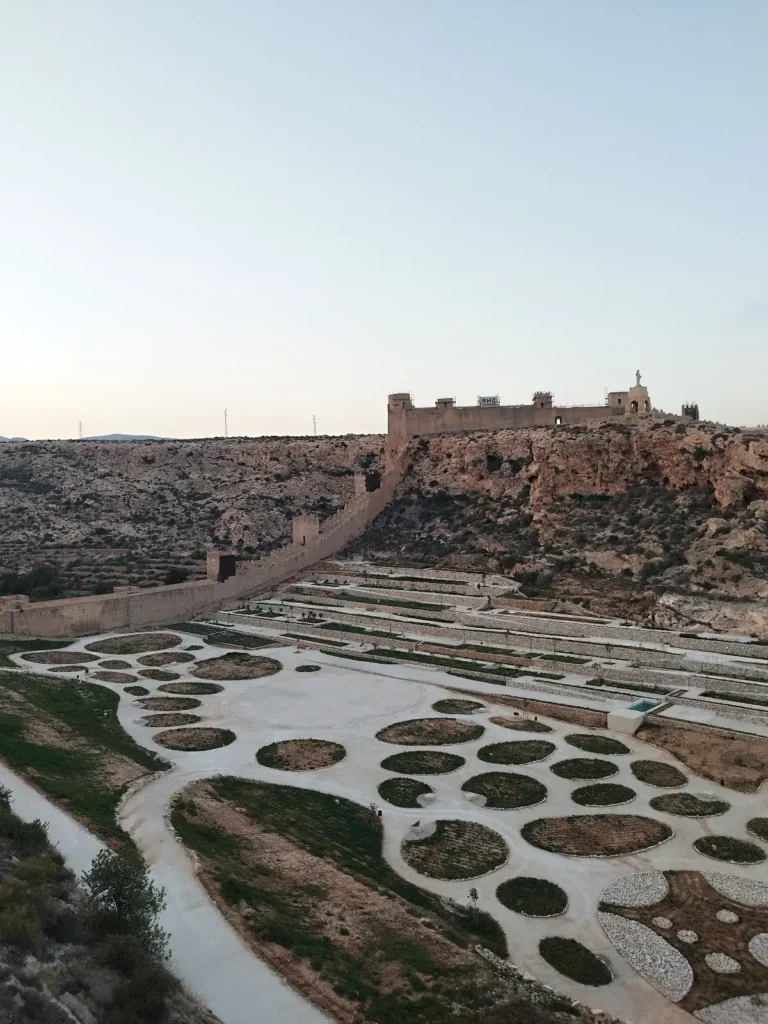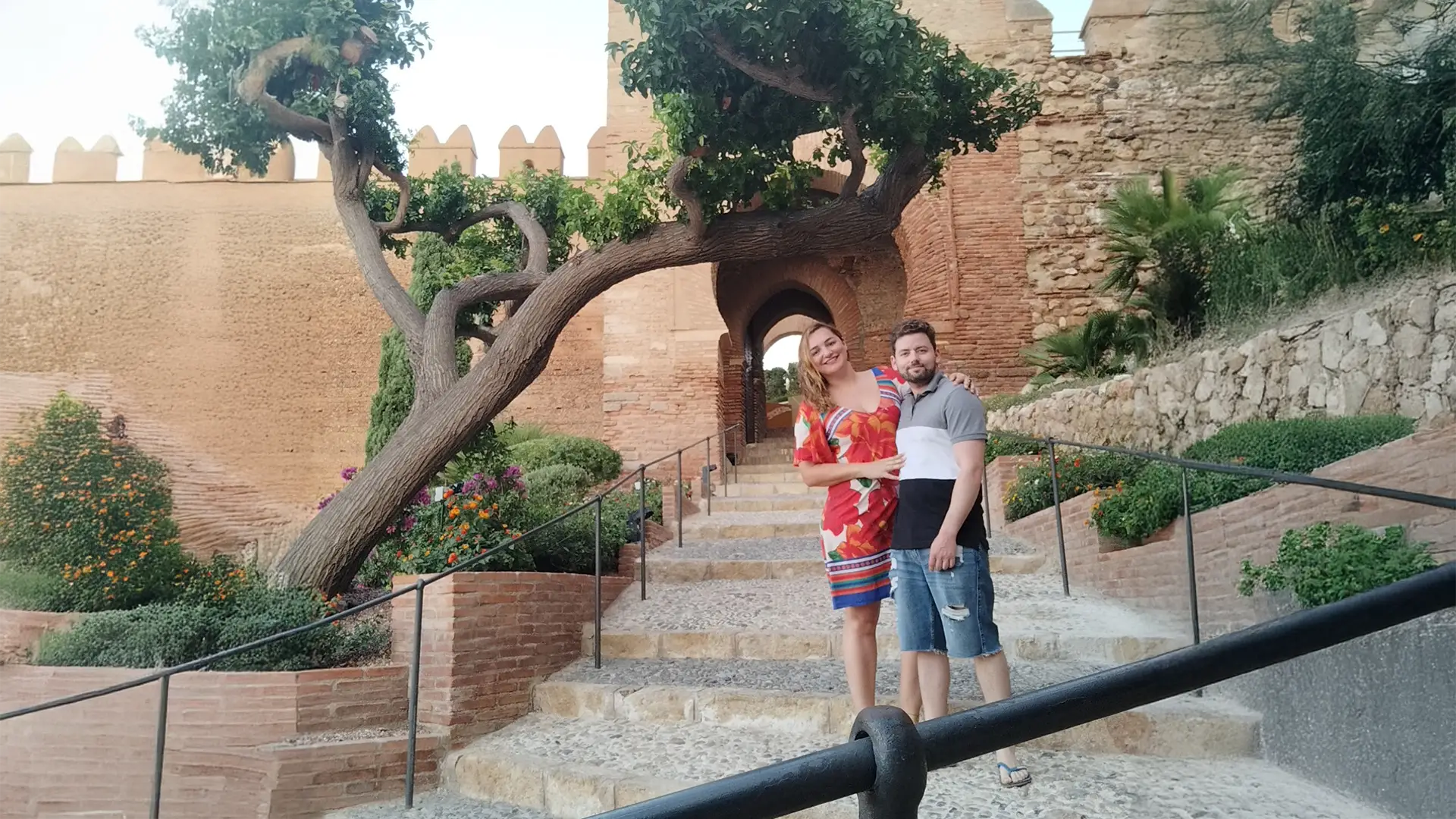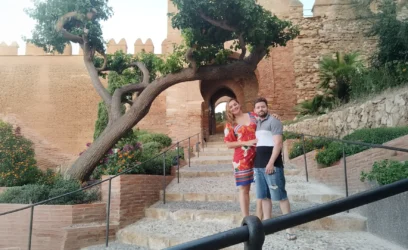In this article, I’ll share some of the reasons that made me want to visit Almeria. And if by the end you’re not at least tempted to explore this hidden gem in Andalusia… well, I don’t know what else to say.
Almeria is a destination that brings together stunning beaches, fascinating history, a laid-back vibe and delicious (and often free) food — in other words, the perfect place to visit. Located in sunny Andalusia, this city is often overlooked by tourists, but it hides real treasures waiting to be discovered.
A Bit of Almeria’s History
Almeria has a rich history, and it was during the period of Arab rule that the city truly flourished. Founded by the Moors in the 10th century, Almeria became one of the most important ports of the Caliphate of Córdoba, playing a key role in Mediterranean trade. During the Reconquista, in 1489, the Catholic Monarchs took control of Almeria, incorporating it into the Kingdom of Castile. Over time, the city faced pirate attacks and devastating earthquakes, but always managed to rebuild.
During the Spanish Civil War, Almeria played a strategic role and was targeted by bombings — the underground shelters built at that time can still be visited today. Nowadays, the city stands out for its tourism, agricultural industry and stunning natural landscapes.
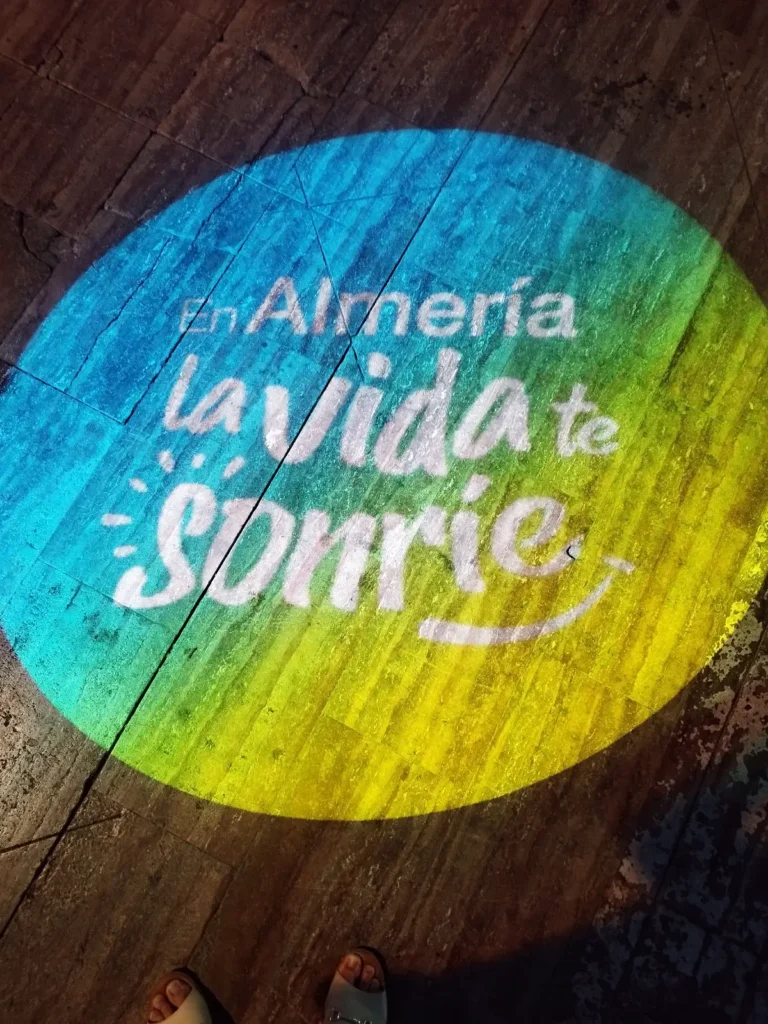
Fun Facts About Almeria

A Cinematic Setting
The Tabernas Desert has served as the backdrop for numerous famous films, including classic Westerns like The Good, the Bad and the Ugly, as well as TV series such as Game of Thrones.
The Sunniest City in Europe
Almeria holds the title of the city with the most sunshine in Europe, with an average of 3,000 hours of sun per year.

The Alcazaba Is Bigger Than the Alhambra
Almeria’s fortress is larger than the famous Alhambra in Granada, making it one of the biggest Moorish constructions in Spain.

The City’s Name Has Arabic Roots
“Almeria” comes from the Arabic word Al-Mariyyah, which means “mirror of the sea.”
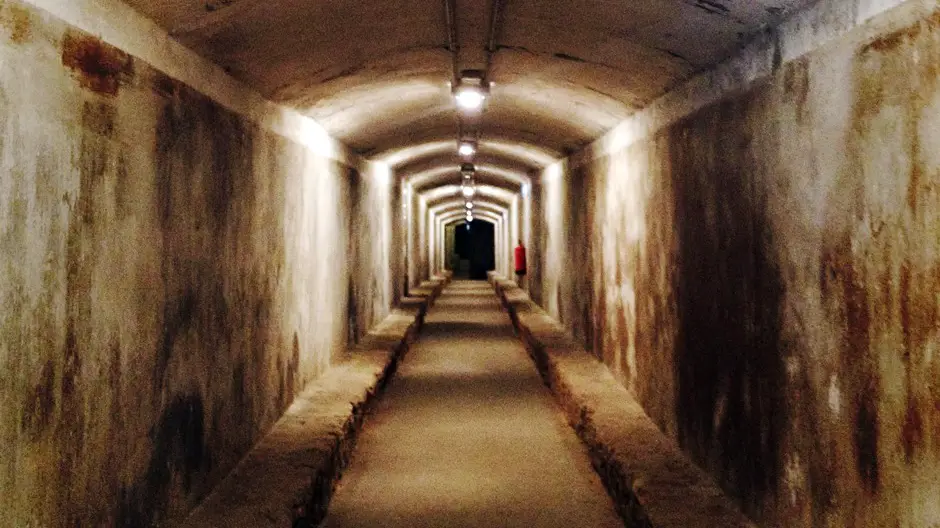
Underground Shelters from the Civil War
The city is home to one of the largest networks of underground tunnels in Spain, built to protect the population from bombings during the Spanish Civil War.

Some of the Best Tapas in Spain
In Almeria, many tapas are served for free when you order a drink — something that doesn’t happen in every region of Spain. And trust me, they’re really, really good.
How to Get There
Almeria is well connected — you can even get there by plane.
By plane
Almeria Airport (LEI) receives both domestic and some international flights. If you can’t find a direct flight, the most common option is to fly into Madrid or Barcelona and take a connecting flight from there.
By car
If you’re already in Spain, driving to Almeria is an excellent option, especially if you want to explore the region at your own pace. From Madrid, it’s around 550 km, which takes about 5 hours and 30 minutes. The roads are well maintained, and the drive is smooth — particularly along the A-7 motorway.
By train
You can also get to Almeria by train. The city has a railway station connected to various parts of Spain. Renfe trains link Almeria to cities like Granada, Seville and Madrid. The journey may take longer than other options, but it’s comfortable, offers beautiful scenery along the way, and there are often great promotional fares available.
By bus
If you’re looking for the most budget-friendly option, bus companies like ALSA and others operate regular routes to Almeria from many Spanish cities.
Coming from Madrid or Barcelona?
Check out our dedicated guides:
When to Go
Almeria has an arid Mediterranean climate, with sunshine almost all year round. If you want to enjoy the beaches without extreme heat, the best months to visit are May, June, September and October. Summer (July and August) can be very hot — ideal for those who love the heat.
If you’re into local festivals, try visiting Almeria during one of these events:
Feria de Almeria (August)
A lively celebration with music, dancing, parades and bullfights.
Semana Santa (Holy Week)
As in the rest of Andalusia, Easter is marked by impressive and moving processions.
Noche de San Juan (June)
A seaside festival with bonfires and midnight dips to welcome the summer.
What to Do in Almeria
- Alcazaba of Almeria: This impressive 10th-century Moorish fortress is one of the largest Muslim monumental complexes in Spain. The views from the top are spectacular!
- Almeria Cathedral: A unique blend of church and fortress, this cathedral was designed to withstand pirate attacks and features a beautiful interior.
- Civil War Shelters: Underground tunnels used during the Spanish Civil War, offering a powerful and immersive historical experience.
- Cable Inglés: A former mineral loading platform that has become a city icon. Its striking iron structure is perfect for photo walks, especially at sunset.
- Praça de Las Velas: One of the city’s most charming spots, this modern seafront square is great for a stroll. It also features a Ferris wheel with incredible views of the sea and the Cable Inglés.
- Cabo de Gata-Níjar Natural Park: One of the most beautiful natural parks in Spain — ideal for hiking, snorkelling, and enjoying dramatic landscapes that look straight out of a film.
- Tabernas Desert: The only desert in Europe, where many classic Westerns were filmed. It even has a theme park: Oasys MiniHollywood!
Check out the full guide with practical information and recommendations for your visit.
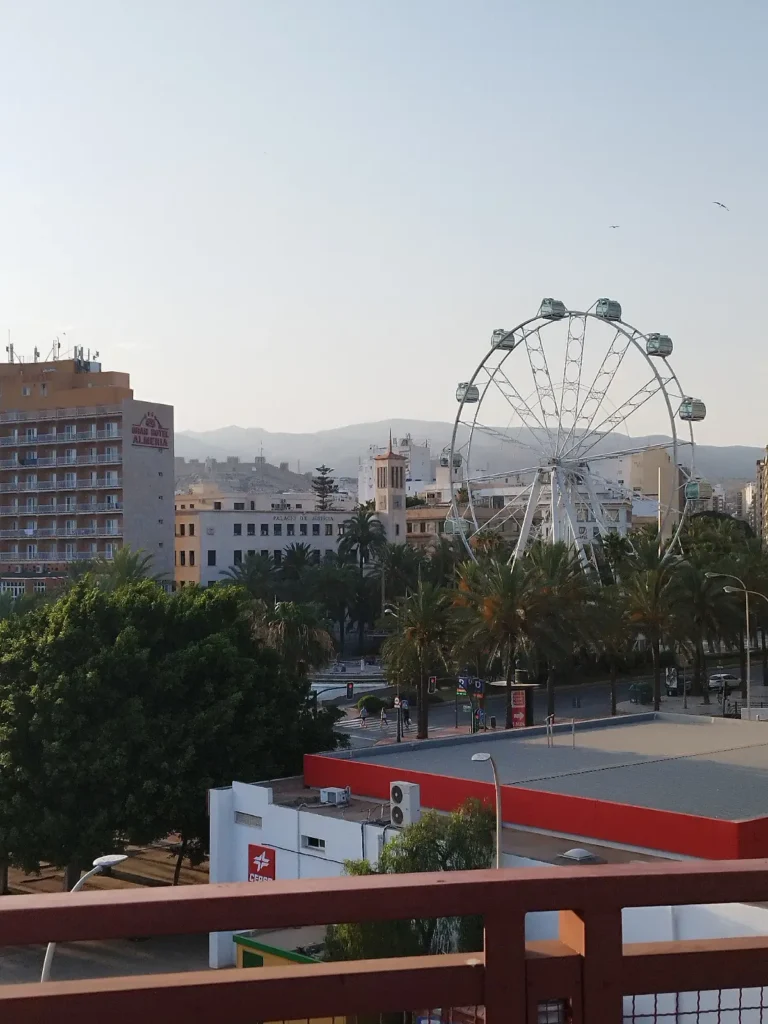
What to Eat
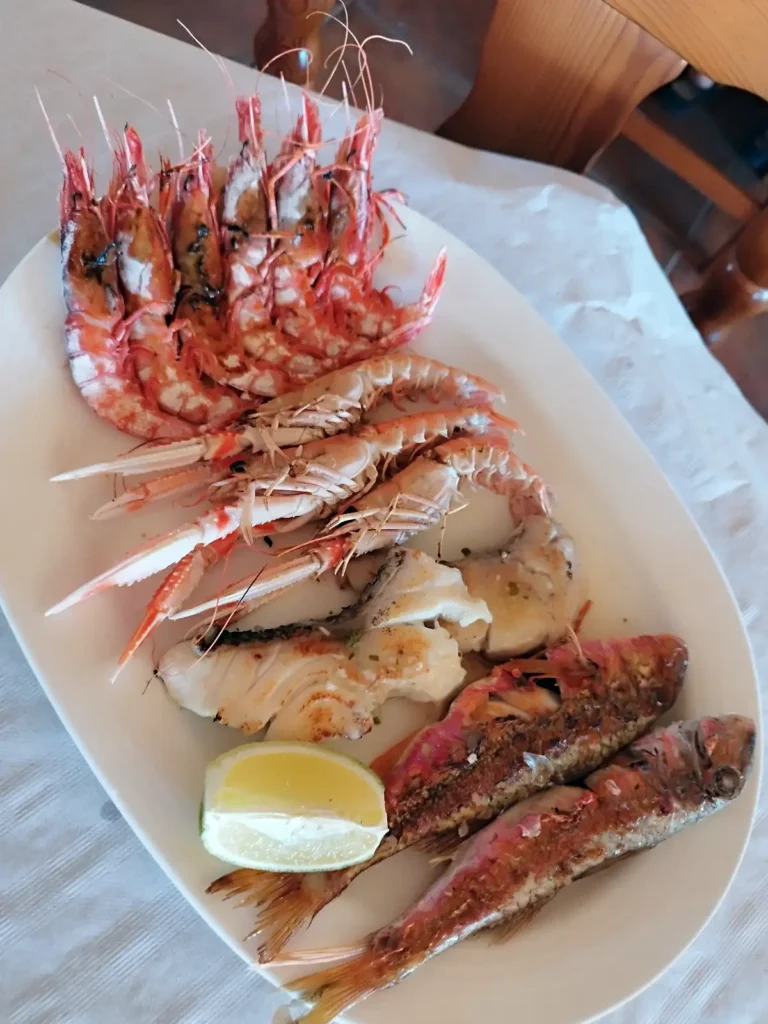
Have I mentioned how good the food is there? And how many bars offer delicious tapas for free when you order a drink? So make the most of your time in Almeria by trying out different places and tasting a variety of tapas — by the end of your stay, you’ll likely have a few favourites of your own.
From my personal experience, my top pick was Capitol, near the Cervantes Theatre. You could choose which tapa you wanted, and every option I tried was excellent — generous portions and full of flavour.
Almeria’s local cuisine is truly delicious, and there are a few dishes you simply have to try:
Chérigan: A typical tapa from the region, usually a slice of bread topped with a variety of ingredients.
Fritura de pescado: Fresh, crispy fried seafood.
Gurullos: A type of handmade pasta served with a meat or fish stew.
Ajo colorao: A traditional dish made with potatoes, red peppers and fish.
What to Explore in the Surrounding Region
Beyond the city of Almeria, the surrounding area offers some incredible places to visit:
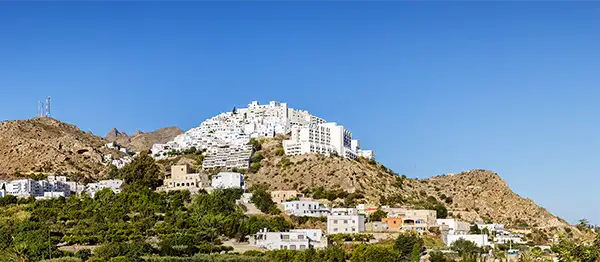
Mojácar
A charming whitewashed village perched on a hilltop.
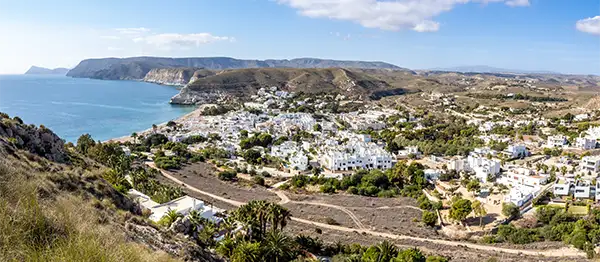
Las Negras
A picturesque village with a laid-back vibe and beautiful beaches.
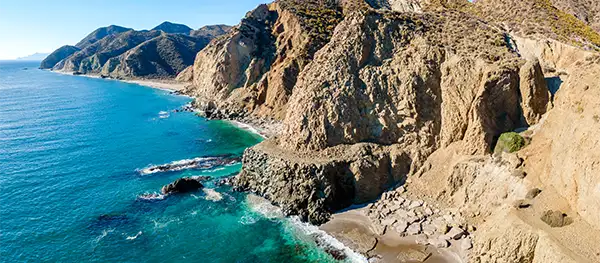
Cabo de Gata
The Cabo de Gata Natural Park is one of the few semi-arid regions in Europe, home to unique species of flora and fauna. See our article on this place.

Rodalquilar
A former mining village with striking, unusual landscapes.

Roquetas de Mar
A place well worth a visit, with a castle and lovely beaches.
Useful Tips
- Don’t forget sunscreen – The sun in Almeria can be quite strong!
- Hire a car – If you’re not arriving by car, consider renting one. It’s the best way to explore the beaches and the Cabo de Gata area freely.
- Parking – The city centre has narrow streets and limited on-street parking. If your accommodation doesn’t include parking, factor in the cost of private car parks when planning your trip.
- Spanish schedules – Lunch is late (usually around 2pm), and many shops close for the traditional siesta.
- Enjoy the sunset – The views over the beaches and mountains at dusk are unforgettable.
Almeria is one of those places that truly surprises and stays with you. If you’re looking to escape the usual tourist routes in Spain and discover an authentic destination full of history and some of the country’s best beaches — now you know where to go.
So… have I convinced you to visit Almeria?
